The process and benefits of design thinking.
What comes to mind when you hear or see “design thinking?” The cognitive, strategic, and workable processes used to develop design concepts are not left to just designers and design teams. At its core, design thinking is a process used for creative problem-solving. When applied to the business world, design thinking has the power to shape and drive innovation. And it works. That’s why many large corporations have instilled the strategic mindset to help evolve their businesses. From IBM and MassMutual to Nike and Airbnb, many successful mainstream companies have heavily profited from the use of this methodology.

Design thinking is no longer a trendy buzzword with little relevance. It is now a well-structured business concept with proven results. A study from Adobe found that companies that encourage creativity are 3.5 times more likely to outperform the competition in relation to revenue growth. Salesforce incorporated design thinking in their sales team discovery process and found a 100% increase in revenue. So, what is design thinking, and how do you use it?
What are the Components of Design Thinking?
What does design thinking look like in the business arena? Let’s break it down. Overall, a design thinking approach is one that minimizes uncertainty and the risk of innovation. The core of this methodology is human-centric and asks the question, “What’s the human need behind this product/method/process/service?” This encourages businesses to focus their efforts on the people they’re creating for, therefore, helping them to understand and deliver to their target audiences.
“We must design for the way people behave, not for how we wish them to behave,” Donald A. Norman, Living With Complexity.
Design thinking is the fusion of what is desirable (from a human perspective), technologically achievable, and economically feasible. It helps to consider all parts of a problem or challenge to understand it holistically, steering projects clear of ambiguity and uncertainty.
The first step in design thinking is to identify the problem at hand. Whether the problem is unexpected or a planned innovation, pinpointing the “what” is the crucial first step. From there, the methodology leads teams to understand the “why,” “how,” and “what’s next” to instigate innovation to create the best possible outcome.

Five Stages of Design Thinking
1. Empathize
The first stage of the design process is to understand the perspective of the target audience/customer/consumer to identify and address the problem at hand. It is also a crucial step in the process to clearly understand and work with team members to strengthen team dynamics and improve the overall performance of a website to meet a common goal. This stage is all about gathering as much information as possible to prepare for development in the next step.
To do this, design thinkers are encouraged to cast aside all assumptions (because assumptions can stifle innovation!) about the problem, the consumers, and the world at large. This allows them to consider any possibilities about the customers and their needs objectively.
2. Define
Putting together all of the information gathered in the first stage, the next step is to define the problem. Careful analysis of observations made will be synthesized to pinpoint the core problem that needs to be addressed. The goal is to convert the defined problem into a tangible, human-centered statement, rather than focusing on technology, monetary returns, or specifics of a product.
3. Ideate
In the third stage, information has been gathered, a problem has been clearly defined, and now it’s time to generate ideas around this data. You better understand your target audience and the ins and outs of the problem. How can you and your team think outside of the box to create alternative solutions to the issue you’ve identified? This is another massive brainstorm session. You collect as many ideas as possible at the start, so that by the end, your team can investigate and test them.

4. Prototype
It’s time to experiment! Through trial and error, your team identifies which of the possible solutions can best solve the identified problem(s). This typically will include scaled-down versions of the products or systems in question, which allows for proper investigation of the generated solutions.
5. Test
All of the work and information come together to test the product in the final stage. It’s important to note that this is still an interactive stage. Often, testing the product leads to redefining problems/solutions and a better understanding of the consumer. This stage allows for all details to be flushed out and refined to create the best solution possible.

Benefits of Design Thinking
The benefits of design thinking are plentiful. From improving team dynamics and productivity to reducing the cost of innovation and getting ahead of competitors, the methodology is a proven working process to create successful change.
Just look at the economic impact design thinking has had on IBM. They reported that the implementation of design thinking has increased its team efficiency by 75%, and it experienced a 301% return on their investment. As stated in the IBM Design Thinking Field Guide, “Our approach is to apply design thinking at the speed and scale the modern enterprise demands. It’s a framework for teaming and action. It helps our teams not only form intent but deliver outcomes — outcomes that advance the state of the art and improve the lives of the people they serve.”

How to Implement Design Thinking
Experts offer Design Thinking Workshops to help teams navigate the process and create successful change. This leadership is imperative, as design thinking is far from a linear path. As IDEO founder David Kelley explains it, “it’s a big mass of looping back to different places in the process.”
Once design thinking skills are learned, business leaders can incorporate them into team management to encourage a healthy, sustainable dynamic. This allows businesses to continuously question their products and practices, helping them to generate solutions in the most productive environment as possible.
Having a critical eye to question what needs to be done in order for employees to do their best work, how to ensure thought diversity to encourage creative and critical thinking, and how to empower employees to take action when necessary are imperative to maintaining a strong relationship with ongoing innovation–either for products and services or within company culture.
“The main tenant of design thinking is empathy for the people you’re trying to design for. Leadership is exactly the same thing–building empathy for the people you’re entrusted to help.” -David Kelley, Founder of IDEO.
Looking for a Design Thinking Workshop Facilitator or Design Thinking Training? Get in touch.
Voltage Control facilitates design thinking workshops, innovation sessions, and Design Sprints. Please reach out at info@voltagecontrol.com for a consultation.



